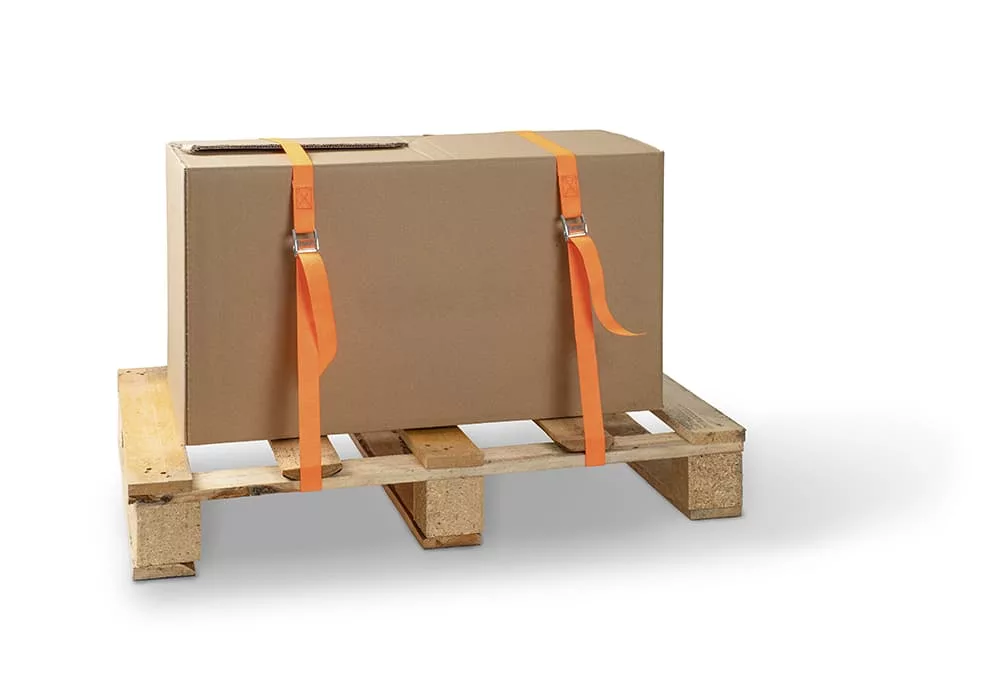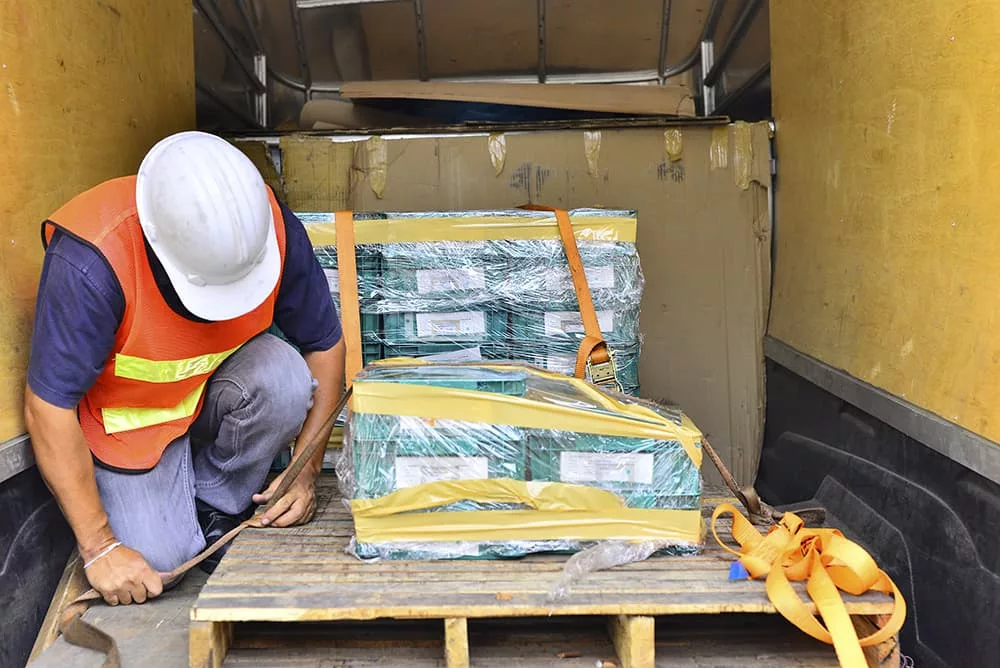Ratchet straps make it possible to secure cargo safely during transport, whether it’s in a truck bed, trailer, or moving van. Many people own them but struggle to use them correctly, which can lead to loose loads or damaged items.To put it in plain language, the prodedures of using a ratchet strap can be summarized into a few steps: open the ratchet, thread the strap through the slot, pull it tight, and crank the handle until the load feels secure.
But there is more to it, as the securement of cargos is determined by many factors and this simplified instruction does not sufficiently explain them. That is the reason why this guide aims to cover not only the step-by-step process but also how to choose the right strap, secure different types of cargo, and release the strap without frustration.
Understanding Ratchet Straps
Ratchet straps provide a secure way to hold cargo in place during transport. They rely on a ratchet mechanism and strong webbing to tighten loads without slipping, making them more reliable than rope or bungee cords for heavy or uneven items.

What Is a Ratchet Strap?
A ratchet strap is a tie down strap designed to secure cargo safely in vehicles, trailers, or storage areas. It consists of a length of heavy-duty polyester webbing paired with a ratcheting device that tightens the strap around the load.
Unlike rope, which can loosen with vibration, a ratchet strap applies constant tension. The ratchet mechanism locks in place, preventing the strap from slipping until it is intentionally released.
These straps are commonly used for moving furniture, equipment, or construction materials. They come in different load capacities, ranging from light-duty straps rated for a few hundred pounds to heavy-duty cargo straps that can handle several thousand pounds.
Key Components of a Ratchet Strap
A ratchet strap has several main parts that work together:
- Webbing: Strong polyester strap that resists stretching and abrasion.
- Ratchet mechanism: A handle and gear system that pulls the strap tighter with each motion.
- Mandrel (spool): The slot where the strap feeds through and winds as it tightens.
- Hooks or end fittings: Connect the strap to anchor points, such as D-rings or rails.
The ratchet mechanism is the most important part. It allows the user to apply tension by moving the handle back and forth. Once locked, the gears prevent backward movement, keeping the strap tight.
End fittings vary depending on the application. S-hooks, flat hooks, snap hooks, and wire hooks are common choices. Each type fits specific anchor points, so choosing the right hardware ensures a secure hold.
Choosing the Right Ratchet Strap
Selecting the correct ratchet strap depends on the type of cargo, the weight being secured, and the strap’s size and strength. Using the wrong strap can lead to loose tie-downs, damaged equipment, or safety risks during transport.
Assessing Load Requirements
Before choosing a strap, the user should evaluate the type of load being secured. A small box on a pickup bed requires far less restraint than heavy machinery on a trailer.
The shape of the cargo also matters. Flat, even surfaces are easier to secure with standard tie down straps, while irregular or rounded items may need multiple straps or additional padding.
Anchor points should be checked as well. A strap is only as strong as the point it connects to, so hooks and tie-down locations must be solid and rated for the load.
Working Load Limit and Breaking Strength
Every ratchet strap has two important ratings: Working Load Limit (WLL) and Breaking Strength. The WLL is the maximum safe load the strap can hold in normal conditions. The Breaking Strength is the point at which the strap will fail.
A common guideline is that the WLL is one-third of the Breaking Strength. For example:
| Breaking Strength | Working Load Limit |
|---|---|
| 3,000 lbs | 1,000 lbs |
| 6,000 lbs | 2,000 lbs |
Users should always select straps with a WLL higher than the actual load weight. If a load weighs 1,500 lbs, straps with at least a 2,000 lb WLL are recommended.
Selecting Strap Length and Width
Strap length determines how far it can reach between anchor points. A strap that is too short will not connect, while one that is too long can leave excess material flapping in the wind. Extra slack should be tied down to prevent wear.
Strap width affects strength and stability. 1-inch straps are common for light loads like small boxes or furniture. 2-inch straps are better for medium loads, such as appliances or motorcycles. 3- to 4-inch straps are typically used for heavy equipment or industrial cargo.
Material also plays a role. Polyester webbing is the most common because it resists stretching and holds up in different weather conditions. Nylon straps stretch more, which can loosen the load during transport.

Procedures on How to Use a Ratchet Strap
Using a ratchet strap involves securing the hooks, threading the strap through the ratchet mechanism, and tightening it until the load is stable. Each step must be done correctly to prevent shifting or damage during transport.
Attaching the Hooks or Ends
The process starts with placing the cargo where it needs to stay. The strap should be positioned across the load so that tension will hold it firmly in place.
Each ratchet tie down strap has hooks or ends designed to anchor to a solid point. In a truck bed, these are usually built-in loops, rails, or anchor points. On trailers, there may be D-rings or side rails. Both hooks must attach to strong, fixed points that can handle the pulling force. If no anchor points are available, the hooks can be clipped together after wrapping the strap around the load.
It is important to keep the strap straight and untwisted before moving to the next step. A twisted strap can weaken the hold and make tightening uneven.
Threading the Strap Through the Ratchet Mechanism
The ratchet mechanism has a central slot called the mandrel. This is where the strap must be threaded to connect the free end to the ratchet.
To start, the ratchet handle should be pulled open until it lays flat. The free end of the strap is then pushed through the slot in the mandrel from the bottom side.
Once threaded, the strap should be pulled through until most slack is removed. It should be snug but not yet tightened by the ratchet handle. At this stage, the strap should run straight across the cargo with no knots or tangles. A clean threading ensures the ratchet will roll the strap evenly when tightened.
Tightening the Strap Securely
With the strap threaded, the ratchet handle is used to tighten. Moving the handle back and forth spins the mandrel, pulling in the strap and increasing tension. Once the correct tension is reached, the handle should be pressed down until it locks with a click. This locks the ratchet mechanism and prevents it from loosening during transport.
Releasing and Removing Ratchet Straps
Releasing a ratchet strap requires unlocking the ratchet mechanism and then removing the strap from the axle. Proper handling prevents jams, protects the tie down straps from damage, and makes storage easier for future use.
Using the Release Lever
To release the strap, the user must first locate the release lever on the ratchet mechanism. This small handle or tab disengages the teeth that keep the strap locked in place. They should pull and hold the lever while fully opening the ratchet handle until it lays flat. A clear click often signals that the lock has been disengaged. At this point, the webbing should move freely.
If the strap feels stuck, it may be due to overtightening or slight twisting in the webbing. Gently wiggling the handle while keeping the lever pressed can help free it without forcing the mechanism.
Unthreading the Strap
Once the ratchet mechanism is unlocked, the strap can be unthreaded. The free end should be pulled back through the axle slot until it is completely loose. For longer straps, it helps to coil the webbing as it is removed to prevent tangles.

Maintenance and Storage Tips
Ratchet straps last longer and perform better when they are checked for wear, stored correctly, and used without common errors. Paying attention to these details helps keep loads secure and reduces the chance of strap failure.
Inspecting for Damage
Before each use, users should carefully check ratchet straps for any signs of wear. Frayed edges, cuts, or thinning fibers can weaken the webbing and make it unsafe. Damaged stitching around the hooks or ratchet assembly is another clear warning sign.
Hardware parts also need attention. The ratchet handle, mandrel, and release lever should move smoothly without sticking. It is also important to look at the hooks or end fittings. Bent or cracked hooks can slip free under pressure. If any part of the strap shows damage, it should be replaced instead of repaired.
Proper Storage Techniques
Keeping tie down straps clean and dry prevents mold, mildew, and weakening of the fibers. After use, straps should be unrolled, wiped down, and left to air dry before storage. Storing them while damp can cause odor and shorten their lifespan.
Rolling straps neatly helps avoid tangles and knots. Starting from the hook end and rolling tightly works best. Straps can be secured with elastic bands, Velcro ties, or strap organizers to keep them from unraveling.
Storage location also matters. Straps should be kept in a cool, dry place away from direct sunlight. Prolonged exposure to UV rays can weaken the webbing over time.
________________________________________________________________________________
Frequently Asked Questions
What safety precautions should I take when using ratchet straps?
Inspect straps before each use for fraying, cuts, or damaged hardware. Avoid over-tightening, as this can damage both the strap and the cargo. Always use a strap with a working load limit higher than the weight of the cargo being secured.
What are the differences between ratchet straps and cam buckle straps?
Ratchet straps use a geared mechanism to tighten and lock the strap, making them better for heavy loads. Cam buckle straps rely on a simple spring-loaded clamp and are tightened by pulling the strap through by hand, which makes them faster but less secure for very heavy cargo.
